

Contact

Home
MONSTERS OF THE DEEP
"Water Kelpies And Other Evils"
MONSTERS OF THE DEEP
"Water Kelpies And Other Evils"
WIDESPREAD BELIEF
Barrier Miner (Broken Hill, NSW)
Date: December 27, 1933
Page Number: 3

These appear to be the days of monsters. Tigers are reported in the bush! And by a strange coincidence come
two stories of the appearance of marine monsters—sea serpents or such creatures—from widely separated parts of the globe.
Dozens of Reports.
The sea serpent has been revived rather handsomely. During the past few months dozens of reports have reached Vancouver (B.C.) from people who say they have seen a serpent of extraordinary size in coastal waters between Vancouver and Victoria.
The most circumstantial account was that of Cyril Andrews and a companion, who were duck shooting near Vancouver Island shore. They rowed over to pick up a duck which one of them had shot, and when within 10 feet of it they were confronted by a huge serpent which rose out of the water and gulped down the bird before their eyes. Certainly, this was a story, too, that needed swallowing, and that surpassed any previous sea serpent yarn—of which marine history reports a good many over the centuries.
Thus the unsupported testimony of these two young men might not have gained much credence, but apparently nine other persons sitting on the deck of a yacht close by saw the entire incident ! At any rate, all of them signed a statement describing the animal, and endorsing Cyril Andrews's description of it. The return
of the sea serpent has something of a grand manner about it.
Similar testimony—and much more of it—appears to be forthcoming from the now celebrated Loch Ness "monster," though no rational explanatoin has yet been forthcoming of the manifestations of some strange and unusual presence in Loch Ness, a great lake which, with Loch Lochy, forms the Caledonian Canal, splits Inverness in half and nearly makes the Highlands an island. However that may be stories of the mysterious beast or fish have been intriguing Great Britain for the past few weeks—some of them unusually circumstantial. Recently it is even alleged to have been photographed.
Between fifty and sixty people claim to have seen the "monster," but not one of them has been sufficiently familiar with known specimens of submarine creatures to advance a theory that squares with possibility as the scientist sees it.
Many of these observers had only a fleeting glimpse of a body, rolling and plunging in the waters. Others were
handicapped by darkness or mist.
Loch Ness Bunyip.
The discoverers of the monster were an Inverness business man and his wife, who declare that on April 28 they saw it plunging in the lake. The body they described as resembling that of a whale. Since then, the creature has appeared at various places along the length of the loch, which exceeds 40 miles. On September 22 it seems to have been particularly active. On that date over 20 people claim to have observed it.
Of these, about a dozen were in two parties at places some distance apart, namely, Balnafoich and Altsigh. The others included an observer at Port Clair, which is some ten miles from Aitsigh.
It was upon this occasion that a considerable number of observers gave the creature the description of the legendary sea serpent, with a small head on a long neck, moving through the water with an undulating motion. But only last week a scout employed by the Automobile Association averred that he had seen the monster swimming rapidly towards a rocky part of the shore where the water is 700 feet deep. He spoke of its back looking brownish in the sunshine, its swaying motion, and the stir in the water behind that suggested propulsion by a large tail.
These descriptions are mild, compared with some that have been circulated. One observer declared that when she saw the creature at night, the eyes, prominent in a huge horse shaped head, shone like motor lamps. Others have suggested that the monster is amphibian, and there have been stories of motors on roads near
the lake shores at night narrowly escaping collision with the monster in the darkness.
Apparently the legend has been growing that the Loch Ness bunyip comes up out of the waters to feed, probably on lambs or even sheep, although no traces of its passage on shore have been discovered, nor have shepherds in the district reported losses among their flocks.
Scientific minds are inclined to scoff at the theory that the Loch Ness mystery is a sea serpent. They regard the suggestion as a revival of the tradition, as old a mankind, that hidden monsters hide deep in the waters of seas and lakes. Every race, indeed, has its version of the fabulous water creature.
Ancient Folklore.
The ancient Babylonians have a tradition that the earth was at first in the possession of a monster called Labbu, which came up out of a deep lake and when slain took three years, three months, one day and two hours to bleed to death. The "Rahab" of the Old Testament signified "the raging sea-monster" and probably represents the primeval dragon of the deep. The "Leviathan" of the Psalms was a denizen of the waters.
Serbian folklore tells of a scaly monster, which, like that of Loch Ness, inhabitated a deep lake amid the pastures of sheep. Teutonic mythology largely centres about Midguard, the huge earth-serpent, cast into the sea by the All-Father, which grew so vast in size that it encircled the earth and finally, seizing its tail in its mouth, interposed between the kingdom of the Infinite and the world. Then Thor, the second person of the Teutonic godhead, went forth to battle with it, but only succeeded in wounding and driving the creature into the depths of the sea.
The water-monster tradition persists among the primitive peoples of Australia. The Warramunga tribes performed elaborate ceremonies to appease a gigantic but mythical water snake that was said to have destroyed a number of people. Western Australian aborigines still dread lakes and refuse to approach them, believing they are inhabited by a deadly monster.
Such myths still live, even in countries that have the greatest claims to modernity and civilisation. It is not long since the pastor of Pathstruie, on the Ochils, those Scottish islands, prayed in the pulpit on frequent occasions that the people might be delivered from "water kelpies" and all other evils."
The Celts of Scotland are of Eastern origin, and their existing legends of sea and lake-monsters, of fairies and fiends, of demons and goblins are the folklore of the East. Perhaps the Loch Ness kelpie may owe its existence to some modern manifestation of the ancient racial mythology.
Such is, apparently, the theory of Mr. Percy Grimshaw, Keeper of the Natural History Department of the Royal Scottish Museum, Edinburgh. He discounts all the "wild "theories" that have been put forward, and thinks that the Loch Ness monster will turn out to be a young beluga, or white whale.
In the course of many generations the persistency with which eye-witnesses have insisted on what they saw seem to some to give credence to the existence of some deep-sea creatures not yet known to man. Even land animals of new species have only recently come to light. The Central African okapi was not known thirty years ago, the existence of the hairy-eared two-horn rhinoceros rests on a single specimen; the dragon lizards of Komodo were unknown to the outer world until Sir Alan Cobham brought news of them on his flight to Australia.
On the whole, therefore, it would appear that the case for and against the sea serpent remains unproven, until, a specimen is actually caught and brought on shore for the examination of the scientists.
by Paul H. LeBlond and Edward L. Bousfield (page 38)
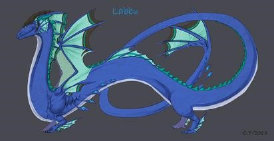
In Mesopotamian myth Labbu was a lion-serpent sea-dragon, that was killed by the god-king Tishpak, "warrior of the gods".

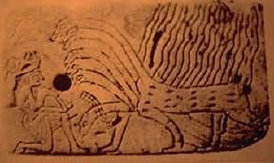
As Rahab the serpent winds its way through Judaeo-Christian beliefs as whore, demon, and ultimately mother of the messianic line.It’s all a matter of when the myth was interpreted as to who exactly the serpent represents.


Leviathan is a sea monster referenced in the Tanakh and in the Christian Old Testament.
The word has become synonymous with any large sea monster or creature.
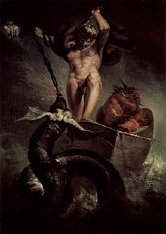

In Norse mythology, Jörmungandr also known as the Midgard Serpent (Old, or World Serpent, is a sea serpent, the middle child of the giantess Angrboða and the god Loki. According to the Prose Edda, Odin took Loki's three children by Angrboða, the wolf Fenrir, Hel and Jörmungandr, and tossed Jörmungandr into the great ocean that encircles Midgard. The serpent grew so large that he was able to surround the earth and grasp his own tail. As a result, he received the name of the Midgard Serpent or World Serpent. When he lets go, the world will end. Jörmungandr's arch-enemy is the god Thor.
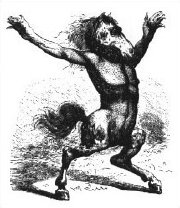
In mythology, the kelpie is described as a strong and powerful horse. Its hide was supposedly black (though in some stories it was white), and appeared as a lost pony, but could be identified by its constantly dripping mane. Its skin was said to be like that of a seal, smooth but as cold as death when touched. Kelpies were said to transform into beautiful women to lure men into their traps. They created illusions to keep themselves hidden, keeping only their eyes above water to scout the surface.

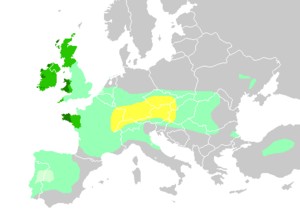
Celts


Percy H. Grimshaw

Nessie photographed?
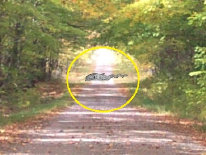
Loch Ness Monster



Okapi
Komodo Dragon


Sir Alan Cobham






















